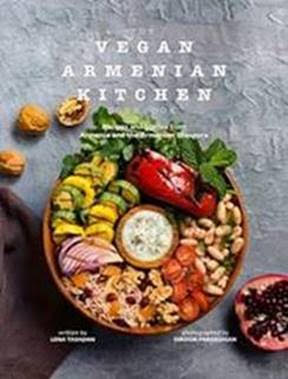This St. Sarkis Halva recipe is featured in The Vegan Armenian Kitchen Cookbook published by Lena Tashjian and Siroon Parseghian in 2020. “The holiday celebrates Saint Sarkis, one of the most beloved Saints within modern Armenian culture, as he is the Armenian patron saint of love and youth, similar to Saint Valentine. His feast day is a moveable feast, held anywhere between January 11 and February 15.
On St. Sarkis Day, Armenians in the Diaspora believe that before you can have the good halva, you have to consume and endure the not-so-good aghablit.
The holiday is celebrated 63 days before Easter, and the aghablit is an unbearably salty cookie or wafer that is always consumed the night before St. Sarkis Day,” says Lena.
“Aghablit sets the wheels of love in motion for those people who are not yet married,” adds Lena. “The night before the holiday, after consuming the aghablit, you are not meant to eat or drink anything afterward, which means you will go to bed thirsty. And then you are expected to dream about a person who will offer you water or lead you to a source of water. According to the tradition, this person will be your future spouse. Every man who has the name Sarkis is congratulated for their name on Saint Sarkis Day.”
On the eve of the holiday, Lena begrudgingly consumes aghablit, reminding herself that by eating the almost inedible cookie so that she will be able to treat herself to the delectable St. Sarkis Halva in the morning.
According to Revd. Dr. Nersessian, “St. Sarkis lived during the fourth century and was from Caesarea of Cappadocia in Asia Minor. He rose through the military ranks as a consequence of his valiant campaigns and even a trustworthy and faithful general to Emperor Constantine the Great, the first Christian Roman Emperor. At the accession to power of Emperor Julian the Apostate in 361 AD, Sarkis took refuge with his son, Martiros, in Armenia. Later, when the pagan emperor Julian fought against the Persians, Sarkis and his son went to Persia to join the Persian army in the service of the Persian king Shapur II and fought in the Persian army against the Romans. Sarkis also converted many Persian soldiers to Christianity. King Shapur II discovered that Sarkis was a Christian and asked him to abandon his faith and embrace Zoroastrianism instead. St. Sarkis steadfastly refused to abandon his faith. Finally, the king executed both Sarkis and his son.











